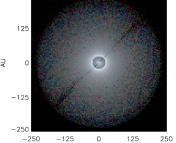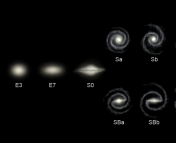 The undergrad research series is where we feature the research that you’re doing. If you’ve missed the previous installments, you can find them under the “Undergraduate Research” category here.
The undergrad research series is where we feature the research that you’re doing. If you’ve missed the previous installments, you can find them under the “Undergraduate Research” category here.
Are you wrapping up a senior thesis? Getting started on an astro research project? If you, too, have been working on a project that you want to share, we want to hear from you! Think you’re up to the challenge of describing your research carefully and clearly to a broad audience, in only one paragraph? Then send us a summary of it!
You can share what you’re doing by clicking on the “Your Research” tab above (or by clicking here) and using the form provided to submit a brief (fewer than 200 words) write-up of your work. The target audience is one familiar with astrophysics but not necessarily your specific subfield, so write clearly and try to avoid jargon. Feel free to also include either a visual regarding your research or else a photo of yourself.
We look forward to hearing from you!
************
Poruri Sai Rahul
Indian Institute of Technology, Madras
rahulporuri.blogspot.com
Rahul is pursuing an integrated BS and MS degree in physics at the Indian Institute of Technology Madras. He’s also the head of the amateur astronomy club, Astro IITM.
The Tully-Fisher Relationship for SAMI Galaxies
The goal of the SAMI survey is to observe galaxies using an IFS instrument and understand the galactic kinematics better. As part of my project with Prof. Jeremy Mould at CAS, Swinburne, we took a different direction and constructed a Tully-Fisher (TF) relation for the SAMI galaxies. The SDSS r, i & z band absolute magnitudes were used and the rotational velocities were extracted from H alpha emission lines in the IFS spectra (using in-house codes). Further, having constructed the TF relation, we intend to extend it into the third dimension using sigma/V_c as a dynamical parameter. Refer to C. Tonini et al. (2014) as to why sigma/V_c is considered appropriate in characterizing hierarchical assembly and to expand the TF relation into a three-dimensional manifold.
Interestingly, while studying the galaxy spectra, we observed galaxies with double-horned H alpha emission profiles – commonly found in HI observations of galaxies. This peculiar profile is observed in luminous galaxies with large rotational velocities which makes the H alpha emission from the left and right halves of the galaxy (from an observational point of view) strongly doppler shifted about the central value.





